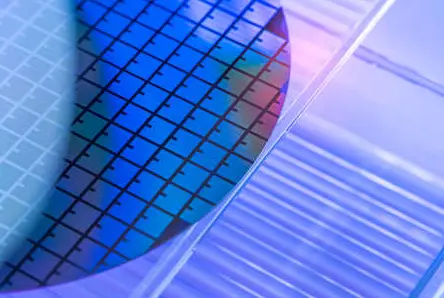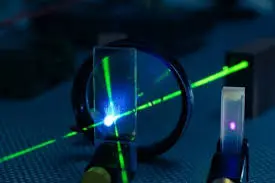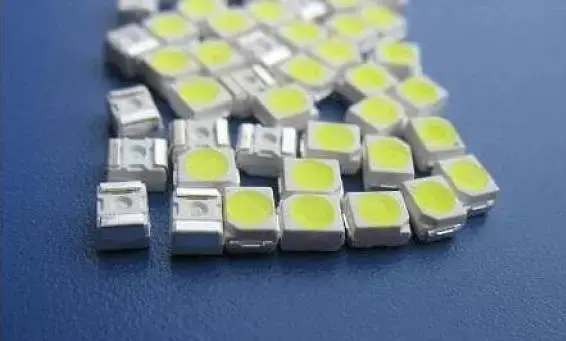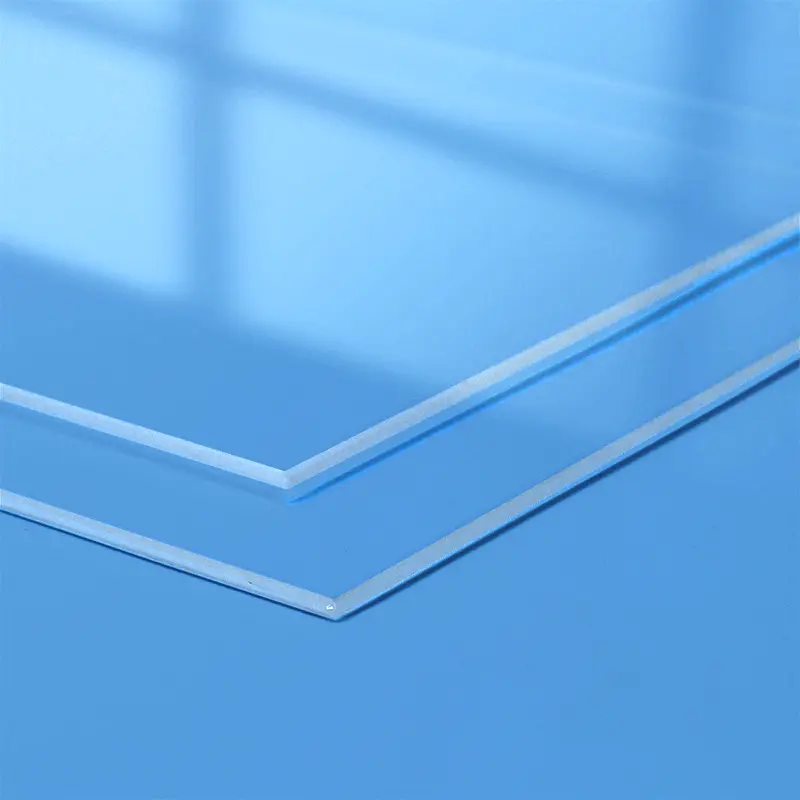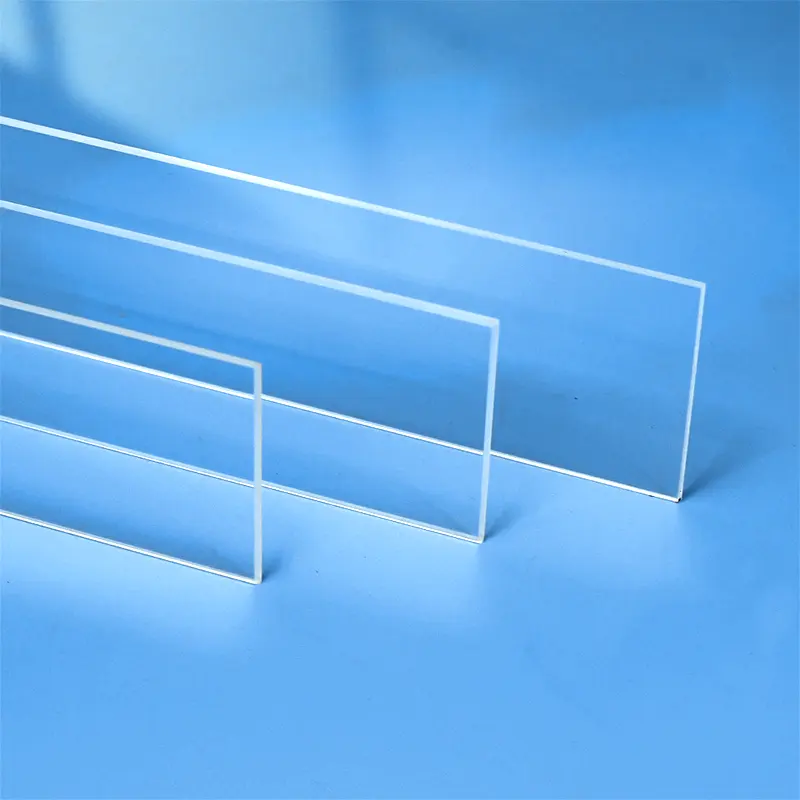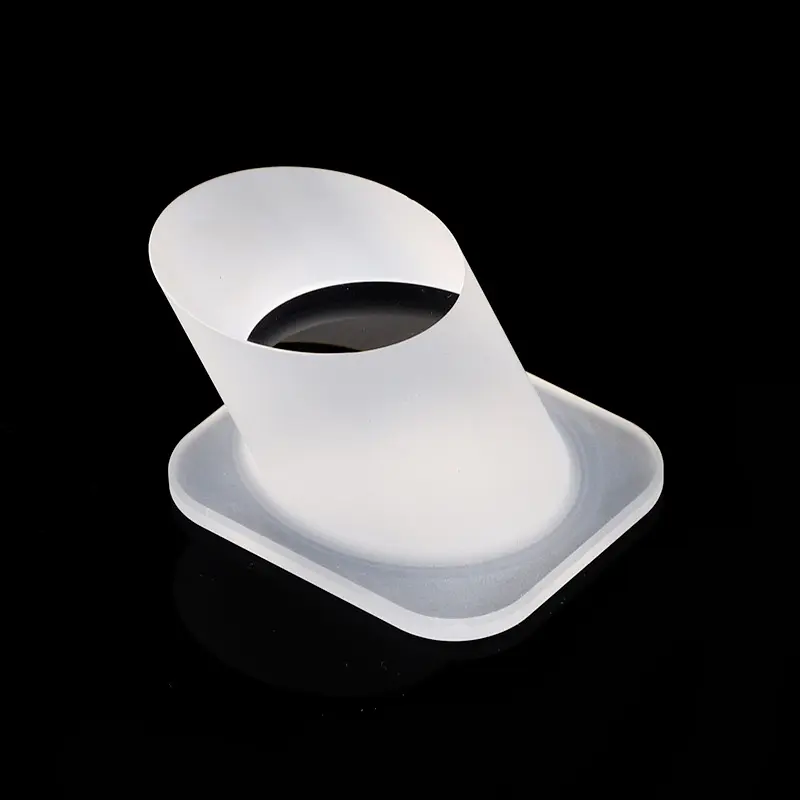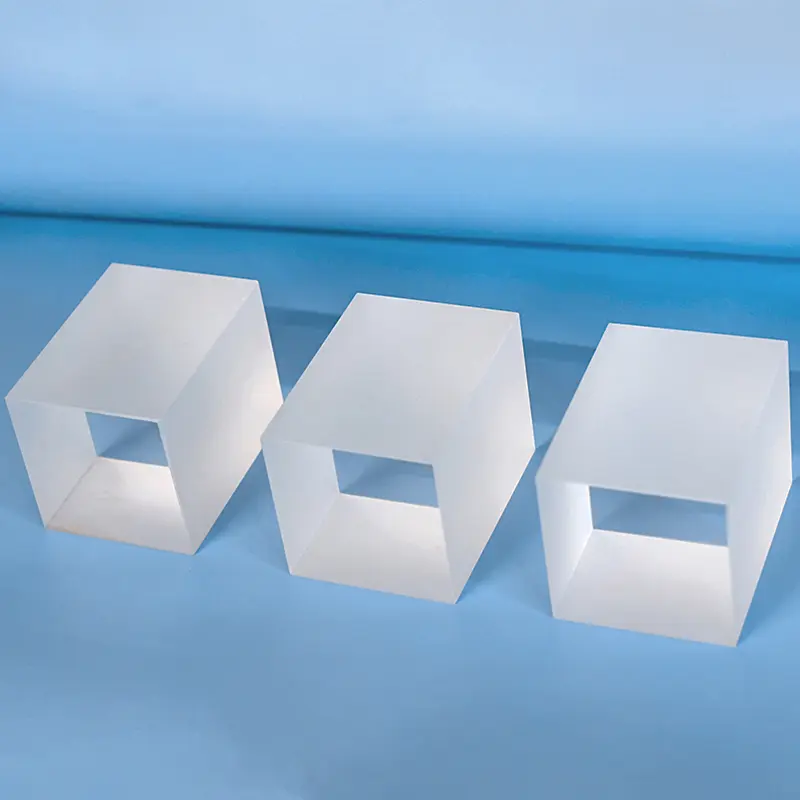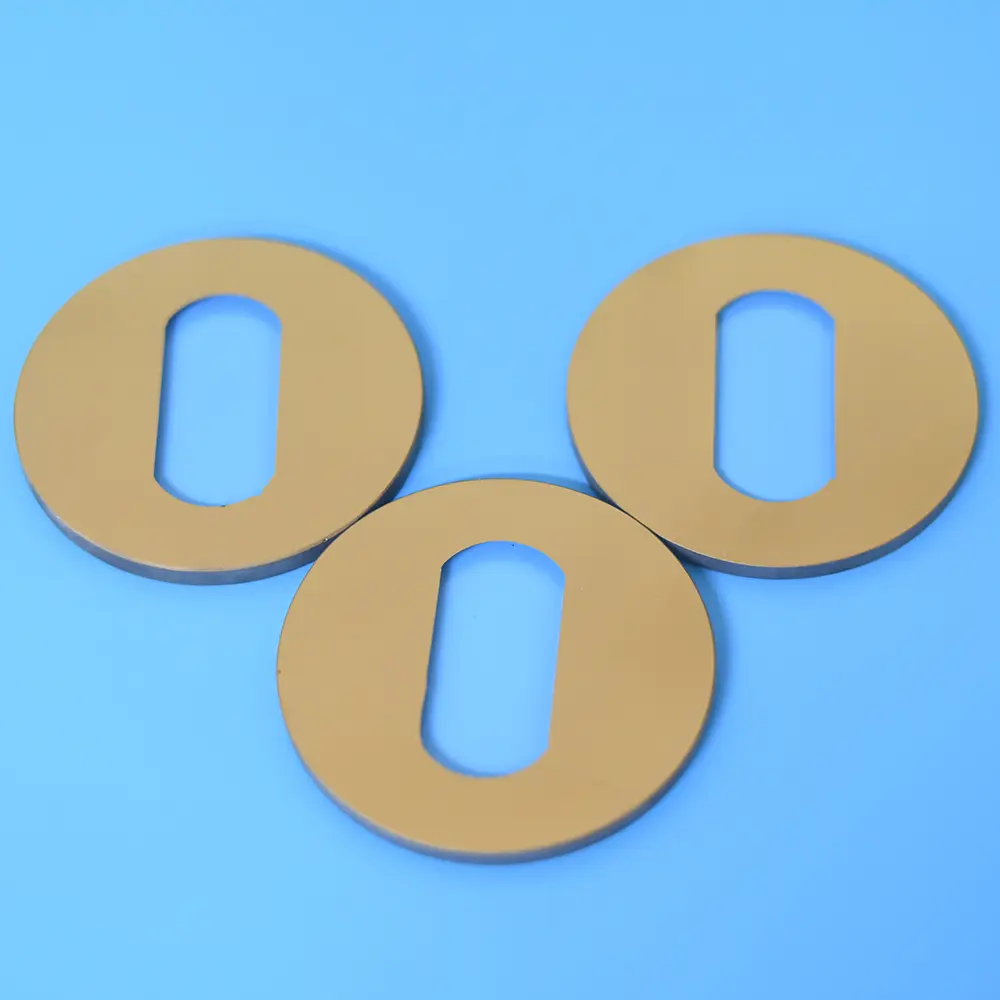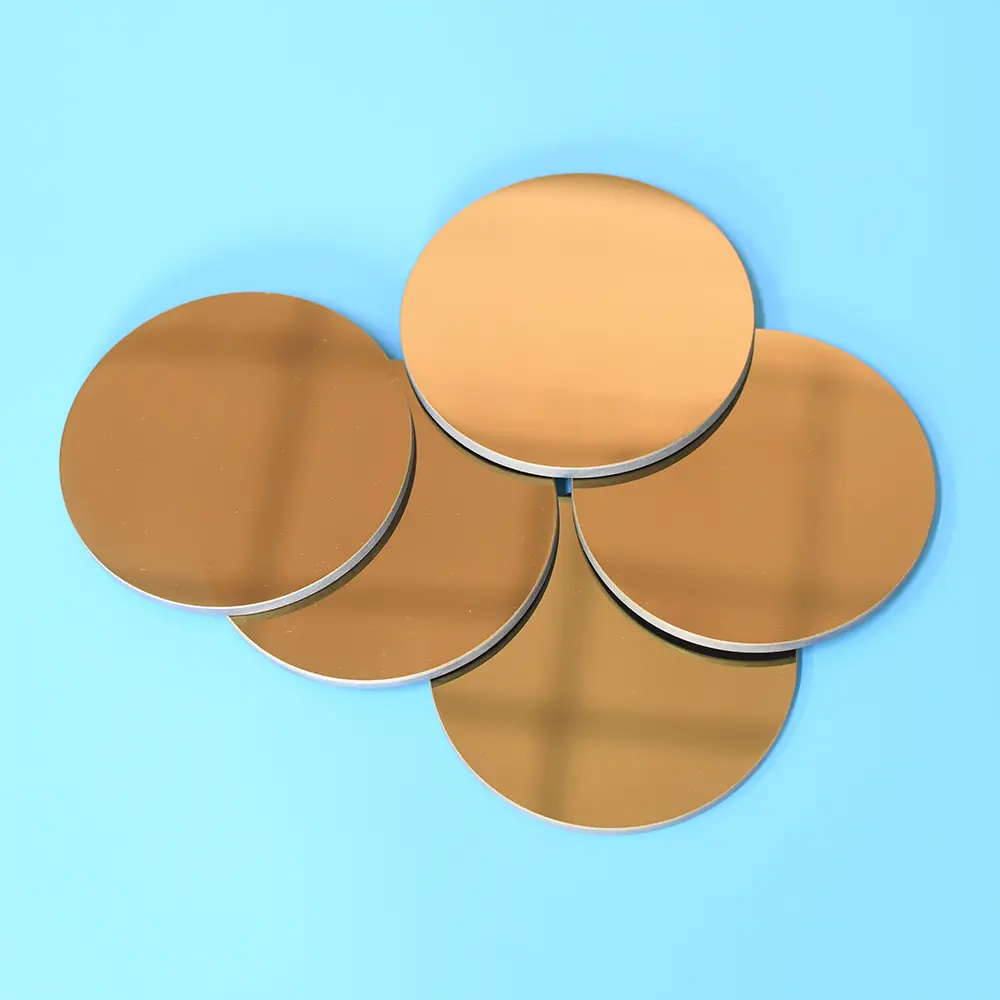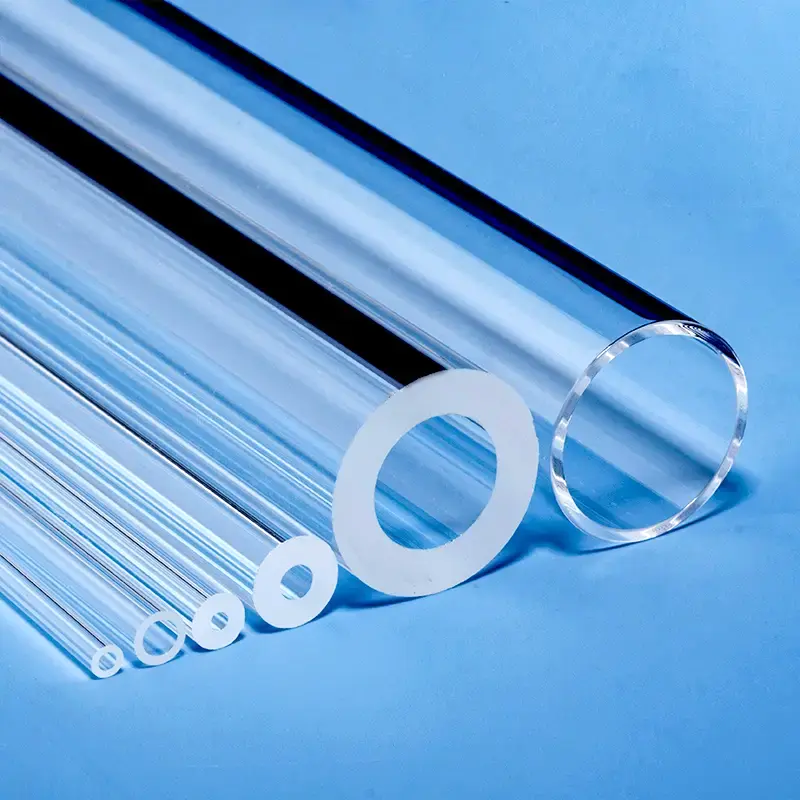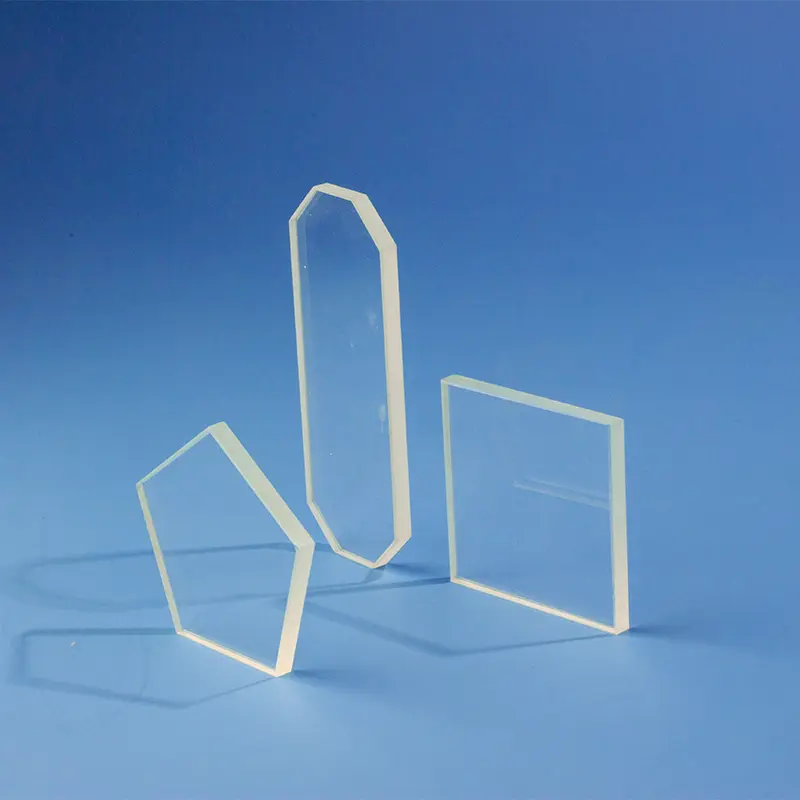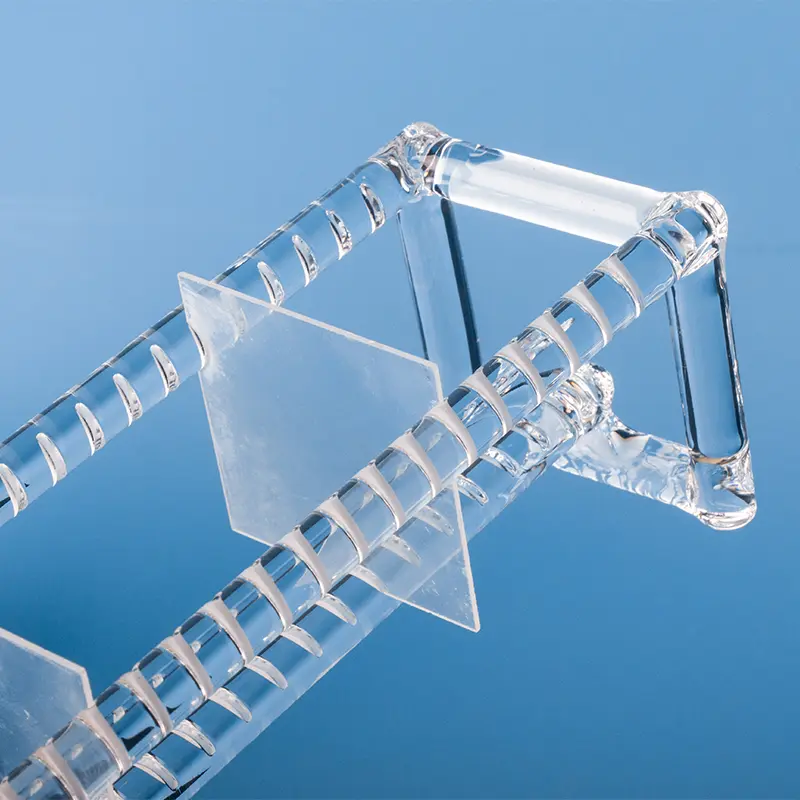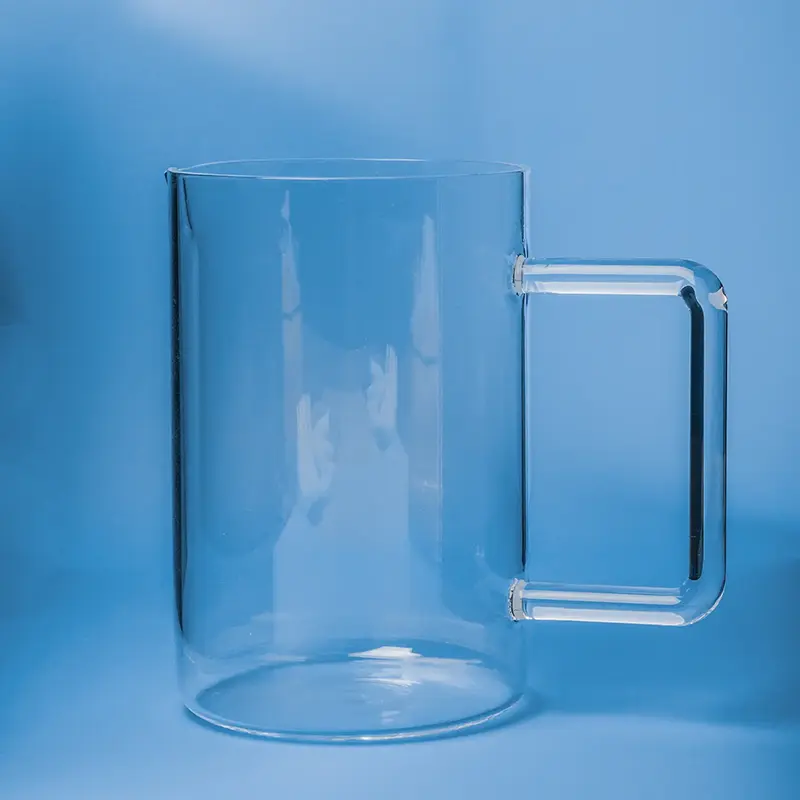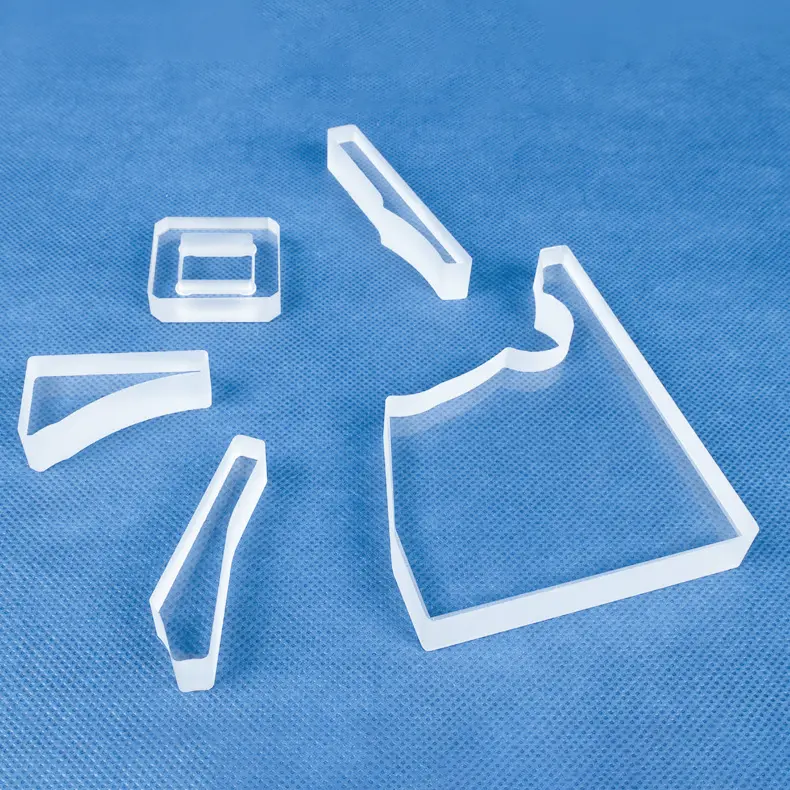当社の石英円盤は、高純度溶融石英から精密加工されています。光学、半導体、レーザー用途向けにカスタム溶融石英ディスクおよび窓を提供します。優れたUV透過率、熱安定性、耐薬品性をご期待ください
| 特性内容 | 特性値 |
|---|---|
| SiO2 | 99.99% |
| 密度 | 2.2×10³ kg/cm³ |
| 硬度 | モース硬度 5.5~6.5; ヌープ硬度 570 (荷重100g) |
| 引張強度 | 4.8 × 10⁷ Pa (48 N/mm² または 48 MPa); 7,000 psi |
| 圧縮強度 | >1.1×10⁹ Pa (160,000 psi) |
| 熱膨張係数 | 5.5×10⁻⁷ cm/cm·°C (20°C-320°C) |
| 熱伝導率 | 1.4 W/m-°C |
| 比熱 | 670 J/kg-°C |
| 軟化点 | 1730度C(3146度F) |
| 徐冷点 | 1210度C(2210度F) |
| 歪点 | 1120度C(2048度F) |
| 使用温度 | 1200°C |
| 電気抵抗率 | 7×10⁷Ωcm (350°C) |
| サイズ | カスタマイズ対応 |
| ロゴ | ロゴのカスタマイズ対応 |
高純度と透明性
石英ディスクは、高純度の二酸化ケイ素から作られ、特に紫外から赤外のスペクトル範囲において優れた透明性を示すため、光学用途に理想的です
高温耐性
石英ディスクは、軟化点が約1730°Cと極めて高い温度に耐えることができ、連続して1100°Cで使用可能であり、短時間であれば最大1450°Cの温度にも耐えられます。このため、高温環境での使用に適しています。
化学的安定性
石英ディスクは、フッ化水素酸を除くほとんどの化学物質に対して優れた耐性を示し、化学実験室および産業用途の両方で非常に安定しています。
低熱膨張係数
石英ディスクは、非常に低い熱膨張係数を持つため、温度変化による寸法の変化がほとんどありません。これは、精密機器や高温装置など、精密な寸法制御が必要な用途にとって不可欠です。
アプリケーションシナリオ
半導体製造において、石英ディスクは主にシリコンウェーハの加工工程におけるキャリアおよび基板として重要な役割を担っています。これらは、フォトリソグラフィ、酸化、拡散、化学気相成長(CVD)といった主要なプロセス工程で基材として利用されます。その高い耐熱性、化学的不活性、そして精密な寸法制御は、半導体デバイスの性能を確保する上で不可欠です
石英ディスクの光学特性は、光エレクトロニクス産業における高透明性および広範なスペクトル透過が要求されるアプリケーションにおいて極めて重要です。これらの特性により、石英ディスクは光学レンズ、プリズム、窓材、その他の光学部品の製造に理想的な材料となります。また、レーザー装置や光通信システムでの使用にも非常に適しています
LED製造において、石英ディスクは主に高温および耐薬品性の支持材料として機能します。これらは、特に高温かつ腐食性環境下での製造プロセス中にLEDチップに安定した物理的サポートと保護を提供し、生産プロセスの安定性と最終製品の品質を確保するために不可欠です。
よくある質問
当社は、高純度石英ガラス部品の一貫製造を専門としております。主な製品ラインナップは以下の通りです:
石英管・石英棒: 幅広い直径と仕様。
石英プレート・ディスク: 光学および工業用途向けに精密に切断・研磨。
石英実験器具: ビーカー、フラスコ、ボートなど、標準品から特注品まで幅広い種類のガラス器具。
半導体グレード石英: 半導体製造用のプロセスチューブやキャリアなどの高純度部品。
特注加工部品: お客様固有の設計および仕様に合わせて、複雑な部品を製造できます。
はい。特注加工(カスタム加工)は、当社の事業の中核です。10年以上にわたる専門的な経験を活かし、お客様企業と提携し、専門的なOEM/ODMサービスを提供しております。当社の加工技術には、溶接、研削、穴あけ、研磨、曲げ加工、その他さまざまな精密加工技術が含まれており、お客様の厳密なご要望にお応えする部品を製造いたします。
品質は当社の製造プロセスにおいて最も重要です。当社はISO 9001:2015認証取得メーカーであり、当社のプロセスが国際的な品質管理基準を満たしていることを保証します。また、当社の製品は純度と性能に関して厳格なSGS試験を受けています。当社は高純度原材料(SiO2 99.998%まで)を使用し、優れた熱安定性、高温耐性、化学的不活性を持つ溶融石英および溶融シリカ製品を製造しています。
当社はプロセスを最大限に効率化しました:
RFQ(見積依頼)を提出:ウェブサイトのお問い合わせフォームまたはEメールで、技術図面、仕様、要件をお送りください。
迅速な対応: 数分以内に初回返信を、30分以内に詳細なご連絡を差し上げます。
設計・提案:24時間以内に詳細な設計提案と競争力のある見積もりをお届けします。
試作・生産:承認後、お客様の納期に間に合わせるため、迅速に試作から本格的な量産へと移行いたします。
Aoxin Quartzとの提携には、いくつかの重要なメリットがあります:
実証された専門知識:業界で10年以上の経験を持つ当社には、複雑な課題に取り組むための技術的知見があります。
One-Stop Solution: We manage the entire production process, from sourcing high-purity raw materials to fabricating and finishing complex components.
競争力のある価値:主要な石英生産拠点に位置することで、効率的なサプライチェーンと先進的な製造技術を活用し、競争力のある価格で卓越した品質を提供しています。
Dedicated Partnership: Over 90% of our clients become long-term partners. We are committed to your success through responsive service, reliable quality, and innovative solutions.


